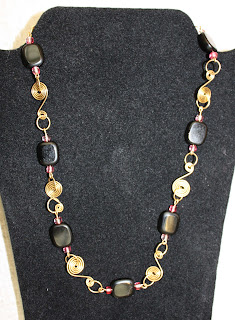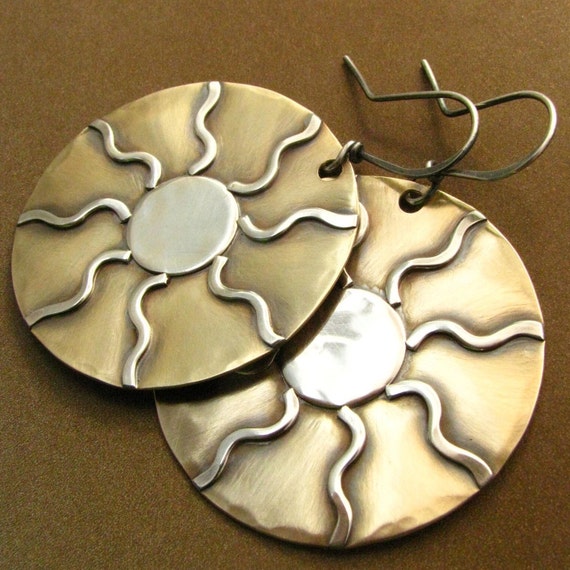 |
| Mercedes W. 2016 |
Learning Objective - You will be able to work with forming wire and soldering while designing a bracelet that shows rhythm and movement.
Language Objective - Copy down the definition for forming into your sketchbook and watch the demonstration.
Vocabulary
forming- the process of shaping metal primarily through the use of dapping blocks and different shaped mallets or hammers.
patinas- the discoloration that forms on metals as a result of natural aging, typically appearing on silver and bronze. The condition is often planned for when the jewelry is designed, can also be introduced artificially by use of chemicals.
liver of sulfur patina- a chemical compound used in metalworking to create antique-looking patinas on silver and copper bearing alloys such as brass, bronze and copper, used in jewelry to create visible texture.
Finishing Tipsforming- the process of shaping metal primarily through the use of dapping blocks and different shaped mallets or hammers.
patinas- the discoloration that forms on metals as a result of natural aging, typically appearing on silver and bronze. The condition is often planned for when the jewelry is designed, can also be introduced artificially by use of chemicals.
liver of sulfur patina- a chemical compound used in metalworking to create antique-looking patinas on silver and copper bearing alloys such as brass, bronze and copper, used in jewelry to create visible texture.
- Remove all visible solder using sandpaper.
- Sand the surface with all levels of sand paper, 320, 400, and 600 grits
- Form your bracelet before linking together
- Use the wider dowels and 18 gauge copper/brass wire for making the links
- Be sure to clean the surface of your metal with ammonia and water before applying the liver or sulfur patina
- Let the patina dry completely before using steel wool to gently clean the surface
Agenda -
- Jewelry I- Work on your bracelets using these steps
- Drill holes and Saw pierce
- File all the edges
- Form wire and flatten to touch the surface of your metal
- Solder the wire and pickle
- Sand the excess solder off your piece and sand the surface for neatness.
- Form your pieces- Be sure your link holes are big enough before you form your bracelet!
- Make links with the 16 gauge wire to link them together
- Create chain work and hook to complete the bracelet
- Use the Liver of Sulfur to patina the surface.
- Steel wool to surface to bring up the shine
- Bracelets are Due Tuesday Oct. 30th
Solder Wire Designed Bracelet Rubric
Demonstrate competency in
traditional and new art media
|
4 Advanced Understanding of the Standard |
3 Meets the Standard |
2 Approaches the Standard |
1 Does Not Meet the Standard |
Evidence Outcome:
Create works of art representing traditional subject matter that
use new media
|
Excellent care and
craftsmanship shown in the work. Your design has more than 5 pierced areas.
The design is original, no cliche images were used.
The bracelet is wearable no sharp edges or points, it’s curved properly and
the links are neat and stable. Cutting is accurate on the piece and proper
filing has left the edges completely smooth, and sanding has removed solder,
file marks, and scratches. Wires are soldered completely to the surface and
ends of the wire are filed. The surface is evenly sanded or polished the
surface looks finished. If you used Liver of Sulfur the surface is even and
properly sanded with steel wool to create a soft bright finish.
|
Proficient/satisfactory care, craftsmanship and skill shown in the
work. Your design has at least 5 pierced areas.
The design is original, no cliche images were used.
The bracelet is wearable no sharp edges or points, it’s curved properly and
the links are neat and stable. Cutting is accurate on the piece and proper
filing has left the edges mostly smooth, and sanding has removed most of the
solder, file marks, and scratches. Wires are soldered completely to the
surface and ends of the wire are filed. The surface is evenly sanded or polished
the surface looks finished. If you used Liver of Sulfur the surface is even
and properly sanded with steel wool to create a soft bright finish.
|
Developing care, craftsmanship and skill shown in the work. Your design has
less than 5 pierced areas. You may have used cliche images for the design.
Piercing has some sharp edges or points and it may not have been curved
properly. Cut out areas are over-cut. Cutting is mostly accurate on the
piece. Proper filing has left the edges mostly smooth, and sanding has not
removed all of the solder, file marks, and scratches. Wires are not
completely soldered onto the surface and or the ends of the wire are not
filed. The surface is not evenly sanded or polished. You may not have
completed your bracelet with a smooth finish or patina.
|
Beginning care, craftsmanship and skill shown in the work.
Your design has less than 4 pierced areas. You’ve used cliche
images for the design. Piercing has sharp edges or points and is not curved. Cut
out areas are over-cut. Cutting isn’t accurate on the piece. The work is not
filed, and sanding has not removed all of the solder, file marks, and
scratches on the surface. Wires are not completely soldered onto the surface
and or the ends of the wire are not filed. The surface is not evenly sanded
or polished. Your bracelet does not have a finish on the surface.
|







